
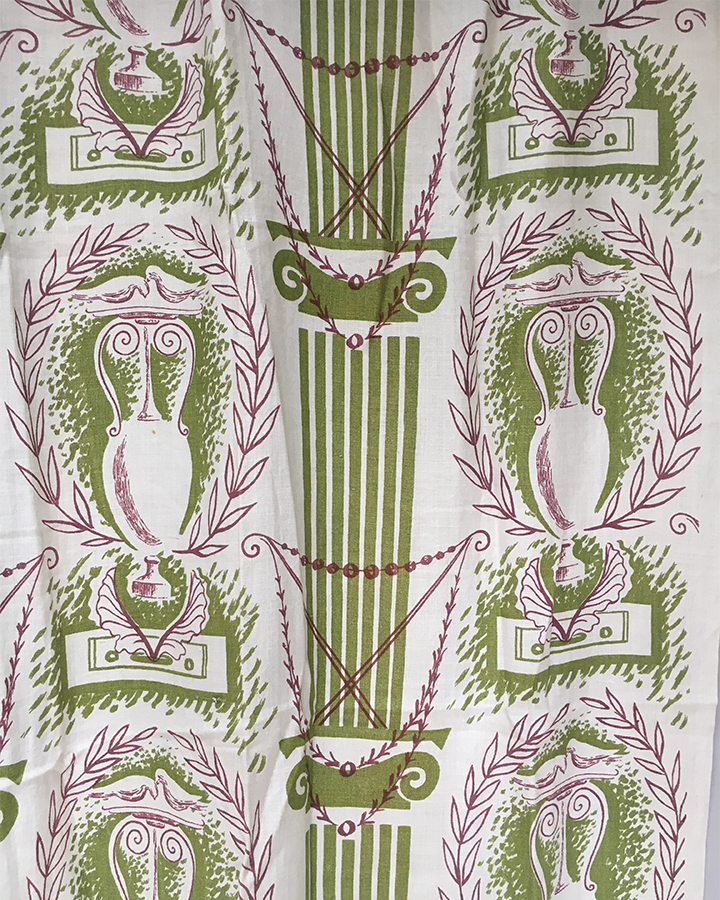
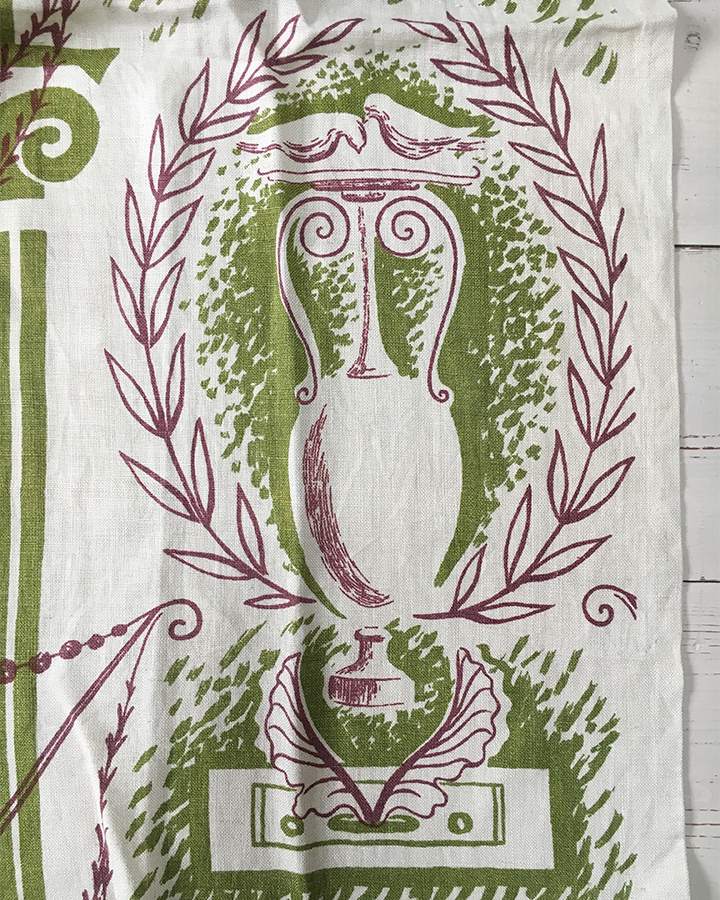
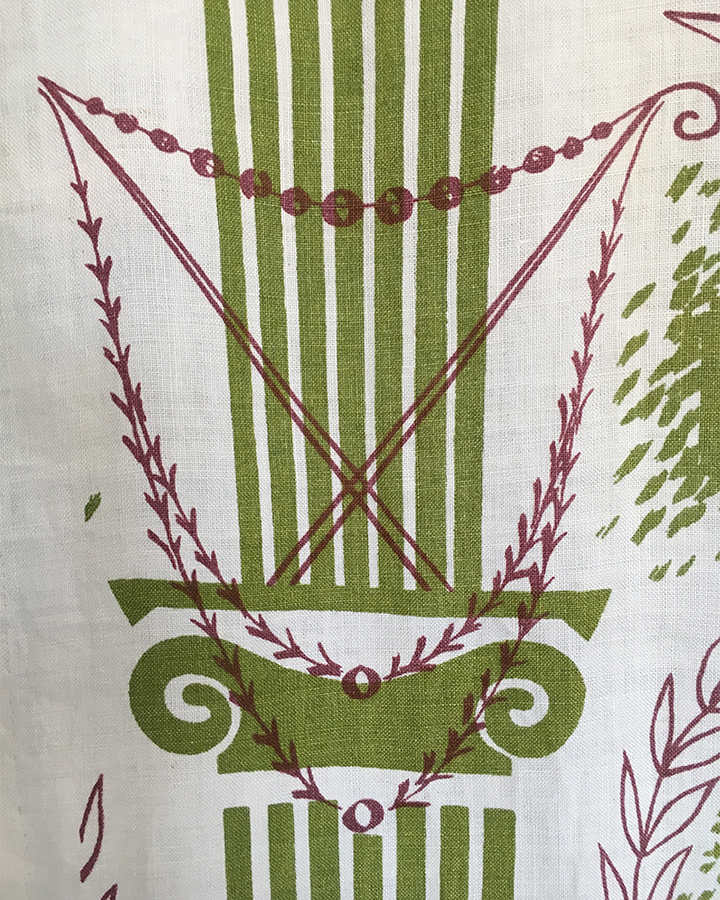
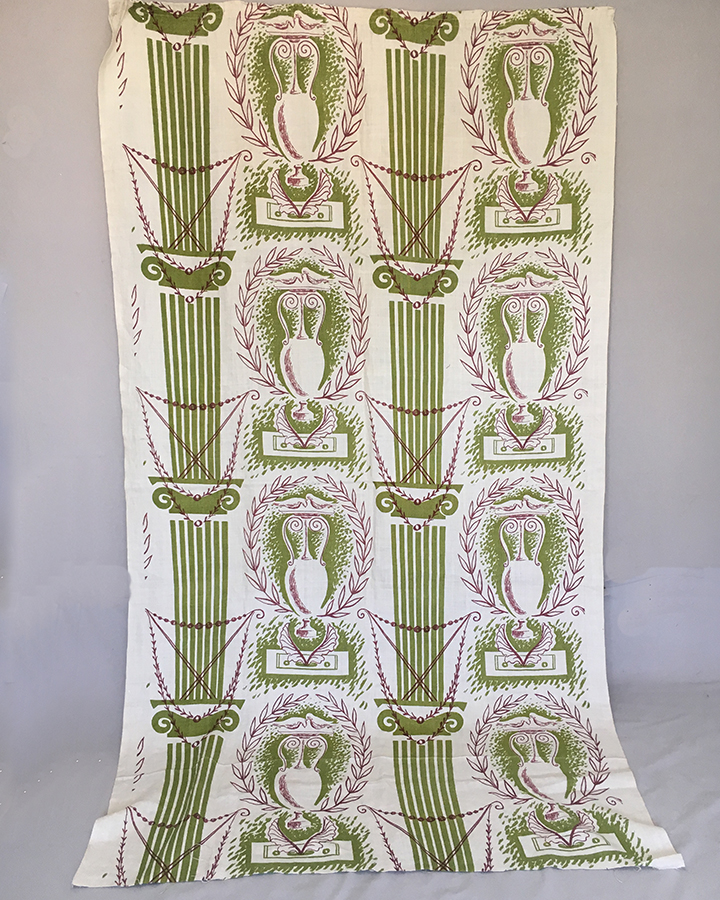
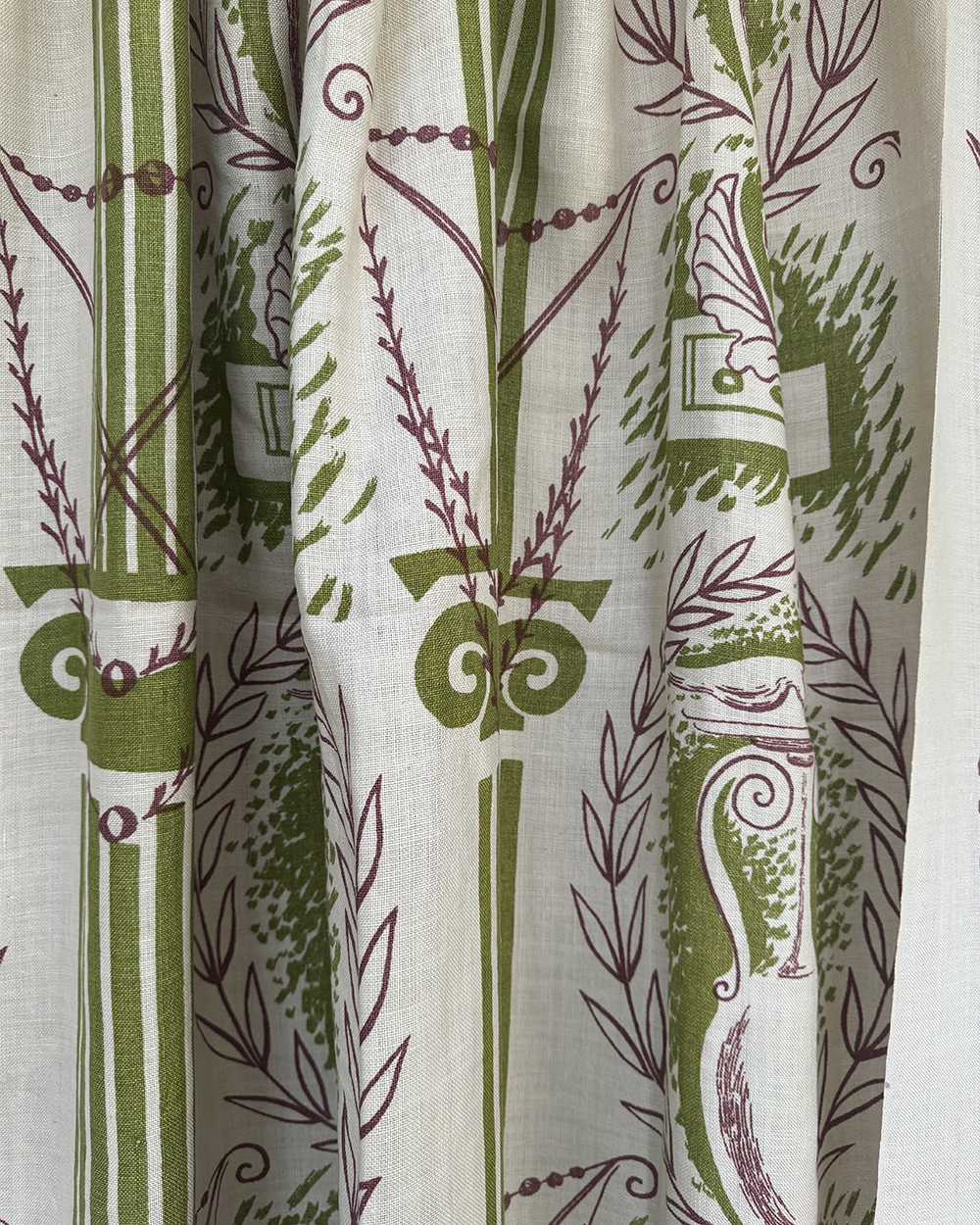
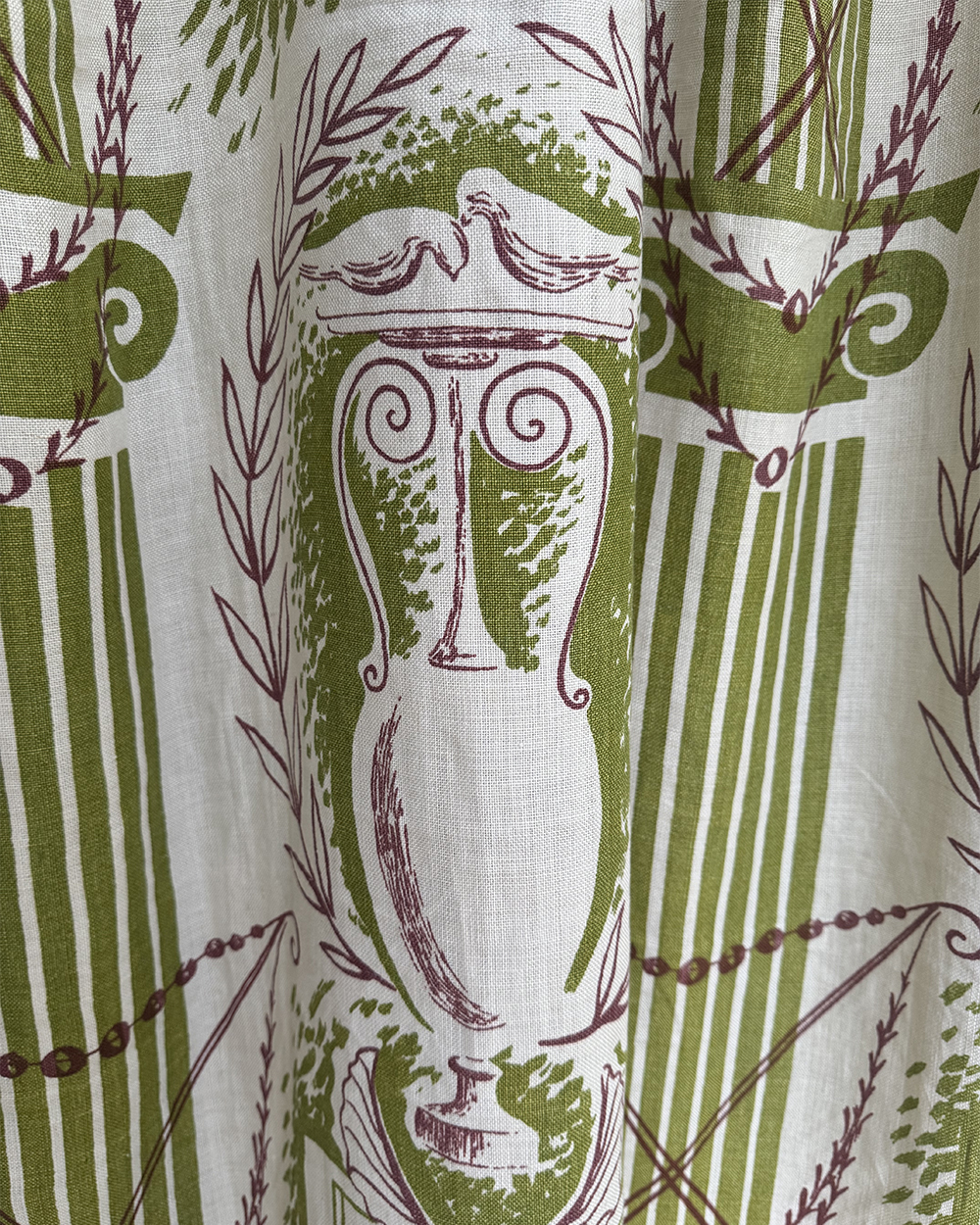
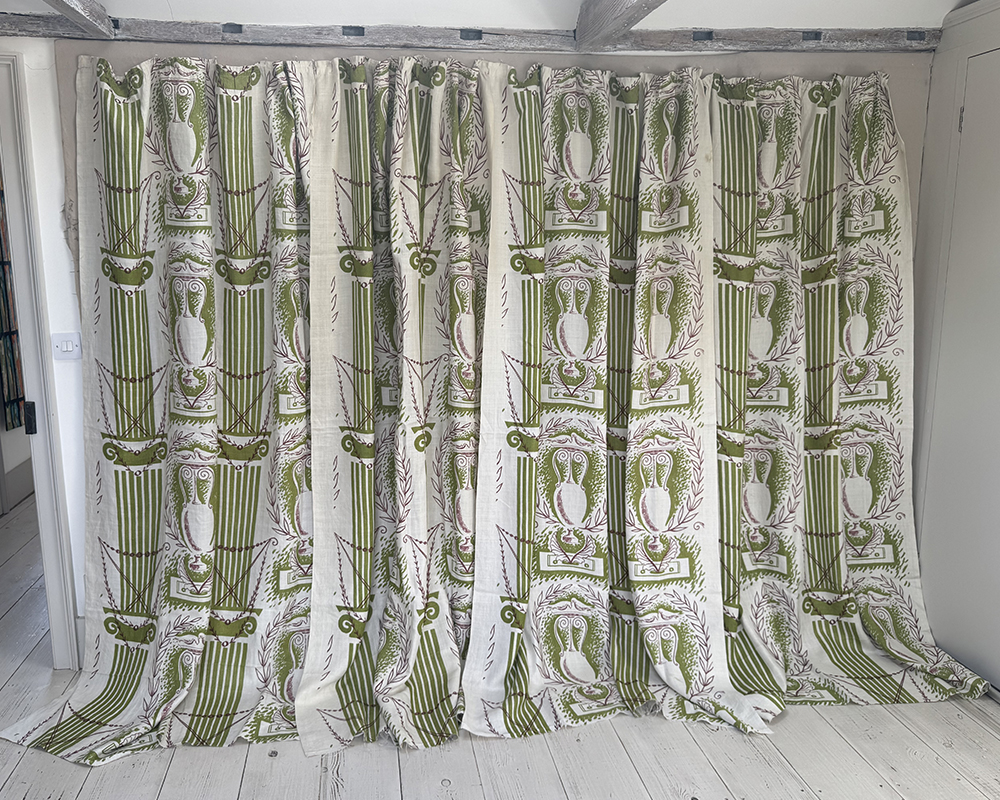
Sheila Walsh for Alan Walton Textiles. This furnishing linen is of a very good quality and weight. The curtains are hand silk screen printed. These are wonderful. So stylish and great colours. There are four lengths which could be used as wallhangings or curtains. I want to sell all four together.
Alan Walton (1891-1948) was born at Cheadle Hume, Cheshire. He lived with his widowed mother and three siblings at Netherlea, Bramhall Lane, Bramhall, nr Stockport. Allan abandoned his architectural studies and learnt to paint with Stanhope Forbes (1857-1947) in Cornwall, then studied at the Slade School of Fine Art 1913-1916 followed by at the Académie de la Grande Chaumiere in Paris, and finally at the Westminster School of Art with Walter Sickert (1860-1942). A painter of still life, landscape and seascapes, he took a studio in Cheyne Walk, Chelsea in 1919 and exhibited at small London galleries and was elected a member of the London Group in 1925. He had his first solo show at Beaux Arts Gallery in 1928 and another at Arthur Tooth & Son Gallery in 1933. He also had exhibitions at the Wertheim Gallery, Leicester Gallieries in London, the Walker Art Gallery in Liverpool . Sally Hunter Fine Art, London held several exhibitions of his work in the mid 1980s.
Walton undertook industrial commissions with designs for textiles and carpets, ceramics, electric fires and furniture and became interested in interior design and restoration of old buildings. He designed the anteroom to Fortunum and Mason's New Contemporary Decoration Department in 1932. The family's textile firm in Collyhurst, Manchester provided Walton with experience of the industry and in 1931, with brother Allan Roger Walton, they set up Allan Walton Textiles. At the first exhibition of Walton fabrics at the London Artists Association Show designs by Vanessa Bell, Duncan Grant, Frank Dobson and Walton himself were shown. He went on to commission other artist designed screen-printed fabrics. which pioneered new ground in printed cloth designs. The decorative textile designs which Walton's firm produced are considered to be among the finest of their type, and Walton was elected one of the first Royal Designers for Industry. He became associated with the Bloomsbury Group and supplied all the textiles for Maynard Keynes's rooms at King's College Cambridge. He also printed designs by Duncan Grant and Vanessa Bell. In 1933 the firm's fabrics were used in BBC offices and on the liner Orion and exhibited at the British Art In Industry exhibition,1935. In the 1930s Walton became artistic director of Edinburgh Weavers, part of Morton Sundour Fabrics Ltd and in 1940 he became one of the first members of the Faculty of Royal Designers for Industry, a member of the the Council of Industrial Design and a member of the Design & Industries Association.
At the outbreak of the WW2 Walton joined the Benton End group of artists, known as The East Anglian School of Painting and Drawing, founded by Cedric Morris and his partner, Arthur Lett-Haines, in 1937. Initially located in Dedham, Essex, the school was moved to a 16th century farmhouse near Hadleigh in Suffolk called Benton End in 1938. Walton made
frequent visits to the school and occasionally taught there. The house and particularly the garden where Morris lived for four decades, is being restored as a centre for art and horticulture and due to open I think in 2026.
Walton was director of the Glasgow School of Art 1943-1945 and in 1948 appointed professor of design at the Royal College of Art but died before he could take up the position.
He lived at Hill House, Shotley, nr Ipswich, Suffolk and exhibited locally.
SHEILA WALSH (1912-1995) studied at the Central School of Art & Design (now Central St Martins) in the early 1930s where she was tutored by the Surrealist painter John Tunnard. Sheila was a great admirer of Tunnard's work and would trade a meal for one of his paintings, gradually building up a large private collection which she (upon death) had bequeathed to Leeds Art Gallery.
Sheila was a jobbing designer who majored in textile designs. In 1934 she was commissioned to design carpets for the radically new cruise ship Orion. She also undertook graphic logo design work and designed greetings telegrams for the Post Office, issued in July 1939.
Sheila married Reg Lintell in 1938. During WW2 she worked in a munitions factory. After the war the couple moved to Guernsey where Reg was employed rebuilding the telecoms network, after decimation under the Nazi occupation. Sheila by now had three children and used her needlework skills undertaking tapestry restorations at Sausmarez Manor on the island. She introduced the National Trust into the islands and was a mover and shaker in the nascent arts and museum scene. Sheila also designed and painted twenty huge hanging pub signs. In 1975 she was one of a group of artists who bought and sympathetically renovated a derelict coach house into The Coach House Gallery. It became a civic society and award winning art gallery where (at 82) Sheila still worked six days a week until a stroke left her bedridden.
Each length with a double vertical design of a segmented classical Doric columns beside two handled Grecian vases within leaf sprays, in subtle lime green and burgundy on a white linen ground, the tops gathered with rufflette tape.
Each 7ft 9 in x 4ft 4 in; 2.35m x 1.32 m selvedge to selvedge
There are four repeats in each curtain.
Very very good.
V & A. CIRC.355-1938 blue colourway. The museum also holds 2 rug designs and four lengths of fabric designed by Sheila.
My thanks to Christine Boydell for finding the design. festivalofpattern.files.wordpress.com. Free-Lance Textile Design in the 1930s: An Improving Prospect? by Christine Boydell
Journal of Design History, Vol. 8, No. 1 (1995), pp. 27-
http://arts.brighton.ac.uk/collections/design-archives/resources/rdis-at-britain-can-make-it,-1946/allan-walton
Sheila Walsh designed two screenprints for Warners.
Price: on request
All images and text © meg-andrews.com 2021